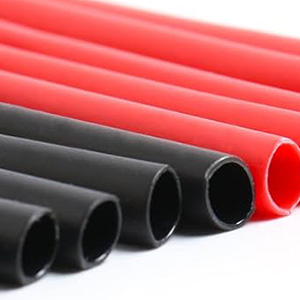 Marine environments are some of the harshest and most demanding for electrical systems and components. The combination of saltwater, extreme weather conditions, and constant exposure to moisture creates a challenging scenario for electrical wiring and connections. Heat shrink tubing has emerged as a critical solution for protecting marine equipment from these adverse conditions, offering a robust, reliable, and cost-effective way to enhance the durability and safety of vessels.
Marine environments are some of the harshest and most demanding for electrical systems and components. The combination of saltwater, extreme weather conditions, and constant exposure to moisture creates a challenging scenario for electrical wiring and connections. Heat shrink tubing has emerged as a critical solution for protecting marine equipment from these adverse conditions, offering a robust, reliable, and cost-effective way to enhance the durability and safety of vessels.
Today, we’ll explore the key marine uses for heat shrink and why it is indispensable for maritime applications.
Top Marine Uses for Heat Shrink
1. Waterproofing Electrical Connections
In a marine environment, keeping electrical connections free from moisture is essential to prevent short circuits, corrosion, and failure. Heat shrink tubing with adhesive linings (also known as dual-wall heat shrink) is commonly used in marine applications for waterproofing. When heated, the adhesive melts and flows around the connection, creating a watertight seal that prevents saltwater ingress and protects against corrosion.
2. Cable Protection and Insulation
Marine vessels often have extensive electrical wiring systems for navigation, communication, and power distribution. These cables are exposed to rough conditions, including abrasion, chemical exposure, and UV rays. Heat shrink tubing provides an additional layer of protection by insulating and shielding these cables from damage, reducing the risk of short circuits and maintaining the integrity of the electrical system.
3. Color-Coding for Identification
In the complex electrical systems of marine vessels, it’s crucial to quickly identify different wires and cables. Heat shrink tubing is available in various colors, allowing marine technicians and electricians to color-code wires for easy identification during installation and maintenance. This simple yet effective strategy helps reduce the time needed for repairs and improves overall safety.
4. Splice and Connector Sealing
When splicing cables or using connectors in a marine setting, ensuring that the connections remain protected from the elements is critical. Heat shrink tubing offers a seamless way to seal splices and connectors, preventing moisture from entering and degrading the connection. This is especially important in marine engines and navigation systems, where reliable electrical performance is non-negotiable.
5. Corrosion Resistance
Corrosion is one of the biggest challenges in marine environments, particularly due to the high salt content in the air and water. Heat shrink tubing with corrosion-resistant properties is used to protect metal components like wire terminals and connectors. By covering these components with heat shrink, the risk of rust and corrosion is significantly reduced, extending the lifespan of the equipment.
6. Strain Relief
Electrical wires and cables on boats and ships are often subjected to constant movement and vibration due to engine operation and rough seas. Over time, this can cause wear and tear at connection points. Heat shrink tubing offers strain relief by absorbing the mechanical stress that would otherwise damage the wiring. This ensures that connections remain stable and less prone to breakage.
Types of Heat Shrink Used in Marine Applications
Different types of heat shrink tubing are used depending on the specific needs of the marine application:
- Dual-Wall Heat Shrink: Ideal for waterproofing and sealing, this type has an outer layer for insulation and an inner layer of adhesive that bonds to the wire, creating a tight seal.
- Polyolefin Heat Shrink: This is the most common type, offering excellent insulation and protection from moisture and chemicals.
- Heavy-Duty Heat Shrink: For areas exposed to intense mechanical stress or abrasion, heavy-duty tubing provides added durability and resistance to damage.
Conclusion
Heat shrink tubing is an essential component for maintaining electrical safety and reliability on marine vessels. Its ability to waterproof, protect against corrosion, provide strain relief, and insulate connections makes it invaluable for maritime applications. Whether you’re outfitting a fishing boat, yacht, or commercial ship, using heat shrink ensures that your vessel’s electrical systems can withstand the harsh marine environment for years to come.


